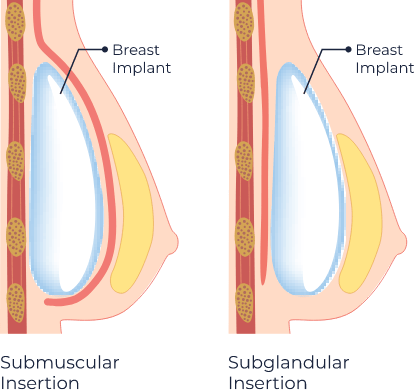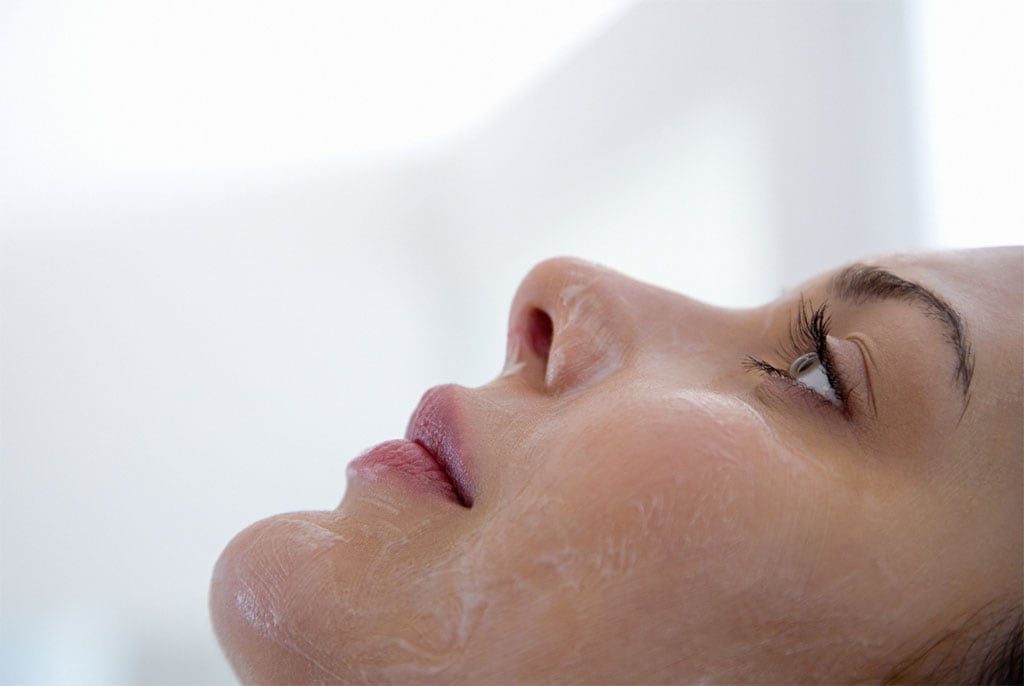Breast Augmentation
With compassion and quality forming the basis of our core values, Dr Rory Dower and his entire team strive to help patients feel like their best selves. Breast augmentation procedures performed by Dr Dower, plastic surgeon in Cape Town, South Africa, can be an ideal solution for women who are looking to improve breast volume, shape and symmetry with beautiful results.
Genetics, hormonal changes, childbirth and the effects of time are all factors that can cause dissatisfaction with breast size and shape. We understand that every woman has unique reasons, motivations and goals for a breast augmentation procedure and our objective is to create a personalized treatment plan that will not only meet your needs, but also exceed your expectations. While each patient is different, our general approach to breast augmentation involves the combination of surgical precision and an artistic eye to create natural-looking results that you can be happy with well into the future. Through advanced surgical techniques and thorough discussion of your desires, we aspire to make your aesthetic dream a reality.
Explore Topics On This Page
Benefits of Breast Augmentation
A breast augmentation will provide different benefits to each patient, depending on their unique reasons for surgery. Dr Dower can help to ensure your own specific goals are being met, but in a general sense, this procedure can fulfill a variety of cosmetic desires, including:
- Increased volume and fullness
- Improved breast symmetry and body proportions
- Improved shape and contour
Though breast augmentation can be an excellent solution for many cosmetic breast concerns, it is important to note that women with a large degree of breast sag or skin laxity may be better served by a breast augmentation mastopexy, commonly referred to as a breast lift with implants. A breast augmentation alone cannot significantly correct sagging breast tissue, but a breast lift with implants can simultaneously increase breast size, improve the projection of breasts and elevate breasts to a higher position on the chest wall. If you are interested in a breast augmentation mastopexy, please inquire with Dr Dower or a member of our team.
I have to say that I was quite nervous when I made the decision to go ahead with breast augmentation surgery but Dr Dower is an extremely kind and humble person (not what you’d expect from the average plastic surgeon) – and he knows exactly what he’s doing. I had confidence in him from the time I met him and with good reason – love my results!
About the Procedure
Our practice believes that no two patients are the same. For this reason, Dr Dower will tailor your treatment according to the unique dimensions of your breasts and body, the characteristics of your breast tissue and your specific goals for the outcome. This can ensure your results align with your desires for surgery and appear in harmony with your silhouette.
Upon consultation, Dr Dower will speak transparently about the expectations and risks of the procedure. Once the goals for surgery are established, you will work together to decide the implant type and implant position for your desired result. The surgery is performed under general anaesthesia and typically utilizes dissolvable stitches, eliminating the need for stitch removal.
Implant Size and Shape
Choosing the size and shape of your implants is one of the most important aspects of the breast augmentation process. Dr Dower has extensive experience in creating beautiful results according to the proportions of a woman’s body contour, and can help you decide which kind of implant would be most beneficial to you. Your options include:
- Silicone: Silicone implants are composed of a silicone gel housed inside of a silicone shell. These implants are known for a minimized risk of rippling and can be beneficial for individuals with thin breast skin. Furthermore, silicone generally remains stable inside the shell if the implant should rupture (a rare complication).
- Anatomical: Anatomical implants, also known as “shaped” or “gummy bear” implants, are composed of a cohesive silicone gel. They are marked by their firm, natural-looking teardrop shape and have a lower chance of rippling than other implant types. Like the name suggests, these implants are able to move naturally with the body and maintain their structure as individuals change positions. Form-stable implants also have the benefit of keeping shape in the rare event of rupturing.
- Saline: Saline implants are made of a safe, saltwater solution and are known for their ability to be filled after being placed in the breast; this can be beneficial for correcting breast asymmetry and result in smaller incisions and residual scarring. A distinct advantage of saline implants is that in the rare event of implant rupture, the saline is harmlessly absorbed into the rest of the body.
Implant Location
 Your implants can be placed either above or below the chest (pectoral) muscle. The implant location that will provide the most optimal breast shape is typically determined by your anatomical features and personal preference. While both locations can provide natural-looking results, each has its own respective advantages and disadvantages.
Your implants can be placed either above or below the chest (pectoral) muscle. The implant location that will provide the most optimal breast shape is typically determined by your anatomical features and personal preference. While both locations can provide natural-looking results, each has its own respective advantages and disadvantages.
- Above chest muscle (sub-glandular): For patients with a sufficient amount of breast skin and tissue, placing the implant above the muscle is often beneficial for larger-sized implants. This location can also provide a rounder breast shape for all implant sizes. Because the chest muscle is left in place during surgery, this approach can result in a relatively shorter recovery period when compared to other approaches. However, because the implant is in direct contact with the breast tissue, its edges may be more easily seen and felt when compared to placement under the muscle.
- Below chest muscle (sub-muscular): Placing the implant under the chest muscle is often ideal for individuals with breast skin and tissue that may be too thin to accommodate placement above the muscle. This approach comes with the benefit of providing sufficient soft tissue coverage, minimizing the likelihood of implant rippling and capsular contracture when compared to an above-the-muscle location. The weight of the implant is also generally better supported when placed below the chest muscle. However, this approach involves repositioning of the muscle in addition to the breast tissue and skin, resulting in a relatively longer healing period than placement over the chest muscle.
Taking your unique anatomical features into account, Dr Dower can recommend the most beneficial implant location that will provide the best outcome according to your goals.
Incision Location
The size and type of implant desired, as well as the nature of your procedure, will typically determine the most ideal incision location. Each technique takes care to avoid significant scarring and can provide a beneficial point of insertion for the implant for various reasons. Different incision sites include the lower crease of the breast, around the areola (dark-pigmented area surrounding the nipple) and near the armpit.
- Inframammary Fold (IMF) Incision: This technique places the incision below the breast fold, where the lower breast crease meets the chest wall. This provides direct access to the location where the implant will be placed, and has an extremely minimal likelihood of altering nipple sensation or breastfeeding function. Any visible scarring will lie in the breasts’ natural crease and the incision can be reused in the event that future breast surgery takes place.
- Peri-Areolar Incision: Here, the incision is inconspicuously located at the bottom of the areola, giving this technique the benefit of discretion. However, because a peri-areolar incision operates on the breast tissue, there can be a greater risk of alteration in nipple sensation than other approaches.
- Trans-Axillary Incision: With a trans-axillary incision, the implant is inserted through a natural fold in the armpit and has the advantage of leaving the breast without any visible scarring. While the incision scar in the armpit can still be visible when the arms are raised, this technique is often useful for saline implant placement. However, this is considered a “one-time” incision that cannot be reused in the event of future breast surgery.
Dr Dower typically uses the inframammary fold (IMF) incision during breast augmentation surgery due to its easy accessibility into the chest muscle and substantially low complication rate. Please don’t hesitate to raise any inquiries or concerns during a consultation.
Recovery after Breast Augmentation
Dr Dower will discuss specific recovery information with you personally, but generally, most patients require at least one week of healing time after the procedure.
Light activities can typically be resumed after a few days. Immediately after the procedure, you may experience some degree of bruising or swelling. This is to be expected, and any discomfort can be alleviated with pain medication. We recommend you abstain from aerobic exercise for a few weeks while your body heals.
Results of a Breast Augmentation
Because of Dr Dower’s efforts to remain transparent about every part of the process, as well as his prioritization of patient safety and comfort, high satisfaction rates are typically reported after the procedure. The full outcome of the surgery should continue to improve as the implants settle into their final position.
FAQs about Breast Augmentation
Will breast augmentation surgery affect my ability to breastfeed in the future?
Unlikely, but it depends on the surgical approach. Most BBA (bilateral breast augmentation) techniques are unlikely to affect your ability to breastfeed, and by this we are talking about incisions made under the fold of the breast or through the armpit. Where there may be more risk, is with a “smile” incision around the areola. This may injure nerves that decrease feeling in your nipple area which could reduce your let-down response and may affect your ability to breastfeed.
Breastfeeding can be affected by many different variables: there are women who struggle to produce milk who have never had breast surgery, and women who have had breast surgery who manage to breastfeed successfully. There are also women who have been able to successfully breastfeed some of their children and not others. This is one of those things that we cannot say yes or no with absolute certainty. One thing we can safely say is that silicone does not find its way into the breast milk when using silicone implants for breast augmentation.
Will breast augmentation increase my chance of getting breast cancer?
There is no link between silicone implants and breast cancer, and according to published studies, silicone implants have not been found to delay the diagnosis or effect the prognosis of breast cancer. There is however a link between textured implants and a very rare type of lymphoma (Breast Implant-Associated Anaplastic Large Cell Lymphoma (BIA-ALCL). Thus far, there have been no confirmed cases of BIA-ALCL in women who have had only “smooth surface” breast implants. For up to date information about BIA-ALCL you can review the American Society of Plastic Surgeons website www.plasticsurgery.org/alcl.
Will breast augmentation work if I feel my breasts are sagging?
After breastfeeding, weight loss or just simple ageing, the nipples can sit low and a breast augmentation alone won’t always give the best results. In this case, a lift (the medical term is mastopexy) may be suggested. It’s important not to go too big with the implant size when a lift is done, as this creates strain on the incisions and increases the risk of complications like wound break down.
Should I wait until after having all my children before having breast augmentation surgery?
Unlike other cosmetic procedures (like a tummy tuck for instance), there is no specific recommendation that you need to wait on having children before a breast augmentation. As long as you understand that your breasts will likely change size and shape during and after pregnancy. You may choose to have further surgery in the future because of this.
How long will the implants last?
In the past, surgeons recommended that breast implants be replaced every 10 years. This is no longer the case. If you’re happy with your implants and not experiencing any problems, it is unlikely that you need replacement.
That said, it’s still possible that additional surgery will be advised, if your implants rupture or harden, if your breasts sag over time or if you decide you want a new look.Will I lose feeling in the nipple area?
With breast augmentation, there is always the risk of a change in nipple sensation (increased or decreased). Fortunately, the risk of total loss of sensation is low since there is no invasive cutting of the breast gland tissue, as there would be in breast reduction surgery. Alterations in nipple sensation usually recover within a few months. The risk of sensory loss is higher with very large implants due to stretching of the sensory nerves.
Can I choose the size and look of the end results?
Different women want different things and this is what makes the in-office consultation such an important time. There are a range of “sizers”, which are real implants that you can place in your bra (it is helpful to bring a couple of different size bras in the sizes you are considering, to make space for your sizers).
One of the important factors to consider is the shape of the implant you would like to have. Is the popular, round implant right for you, or would you prefer the “tear drop “, natural (but pricier) look? To get a great result, the breast implant size you choose should also be right for your frame and size.
Some surgeons offer computer imaging technology called VECTRA, a simulation of predicted results. It will help give you an idea of what you’ll look like, but the drawback is that it is not an accurate representation of the final result.
Do I need to make any life style changes before having a breast augmentation?
The best way to prepare for your breast augmentation surgery is to:
- Be as close to your ideal weight as possible.
Weight fluctuations can affect the size and shape of your breasts. - Not smoke (or be willing to quit before surgery).
Smoking increases the risk of infection and wound break down. If you smoke, it is recommended that you stop for about a month before and after your surgery. - Be in your best health.
The healthier you are, the safer the surgery and the smoother your recovery will be.
- Be as close to your ideal weight as possible.
What is the down time and how soon after the procedure can I drive?
Although you can gently walk about immediately after surgery, you should avoid any excessive stretching or lifting during the first 7 to 10 days. You should also refrain from doing anything that will raise your blood pressure (including having sex) for this time, due to the risk of developing a hematoma.
Driving is allowed after one week (and not permitted prior to this, mainly due to seat belt irritation over your chest). You will need to have stopped your narcotic pain medication, and have full range of motion of your arms, to be able to stop the car or swerve in an emergency. You may resume light exercises at around two weeks and your normal exercise routine at around four weeks. Upper arm exercises and swimming can begin after six weeks.
If you are interested in breast augmentation or if you would like to schedule a consultation, please don’t hesitate to contact our practice today about any questions or concerns you may have.








